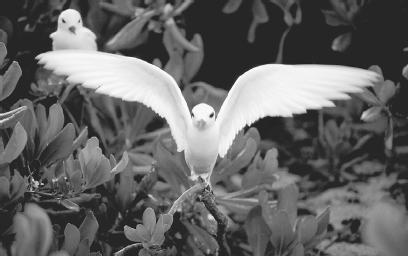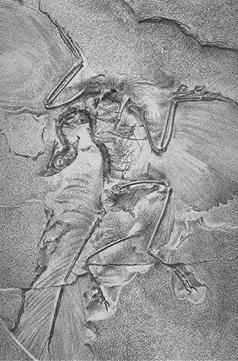
Wednesday, April 30, 2008
How many feathers has a bird?
It is an old poser. A basic rule seems to be, not surprisingly, that the larger the bird, the more numerous its feathers. A dairyman once counted all the feathers on a Plymouth Rockhen. there were 8,325. Another investigator, patiently plucking a whistling swan, amassed a record of 25,216 feathers, 80 per cent of which came from the head and the extremely long neck. A ruby-throated humming bird examined by Alexander Wetmore of the Smithsonian Institution showed a low count of 940, yet the tiny bird had many more feathers per unit of body surface than did the swan. Songbirds run between 1,100 and 4,600 feathers, depending on the species and the counts are remarkably consistent for any one species, although there is often a seasonal difference.


The long and the short of humming bird bills
Although nobody knows what the earliest humming bird bills were like, experts suspect that their dimensions were generally much the same as the bill of the hermit since most modern humming birds bill are similar to it. However, others have diverged in remarkable ways. The sicklebill has the most extreme curve of any species, the thornbill is the shortest and the swordbill at five inches is the longest. Each is specially adapted for feeding from flowers of a particular size and shape.


Bird is a lightweight flying machine
Compared to a lizrd, a bird is a lightweight flying machine of few skeletal parts. Body bones flattened and welded onto a short backbone supporting the wings. The collar bones are fused into a single “wishbone”. The breastbone has a deep keel to provide asurface for attachment of a large flying muscle. The wing is lengthened forelimb. The arm carries the short flight feathers. The wrist and three-fingered hand together support the long primaries. The pelvic bones and lower backbone form a rigid unit.


Monday, April 21, 2008
What's a bird
Almost everyone know what a bird looks like when we see one. But how to describe them? How to distinguish them from other animal? Flight But, insects can fly as well. No doubt, birds are one of the most beautiful, melodious, admired, studied and protected. Birds can be found almost anywhere on this planet except for centre of Antartic continent.
Sunday, April 20, 2008
The earliest bird - Archaeopteryx
The earliest bird known to human is called Archaeopteryx. How did we discover that? Well, it left its semi-reptilian print in clay. Although it has feathers, scientist believe it probably does not fly much or could be bad in flying – so they prefer to spend more time on ground.
Watch an animated music video of Archaeopteryx
What it takes to fly
Everyone can guess and answer if this question is asked. It is more than anything else. The feather is responsible for making the flight in birds. Though bird is not the only living things on the planet that can fly. Insects can fly and so do the bats (bats are not birds, they are mammals). Even human can fly - with a machine. Still, birds are considered the most efficient aeronauts of all.
"The feather is a marvel of natural engineering."
Feather is extremely light yet very strong structurally. It can be replaced if damaged.
Please click the donate icon below to contribute so that I know that someone like you appreciate what I am doing on this blog. Thank you.
Saturday, April 19, 2008
A Plurality of Birds
- a siege of herons or bitterns
- a plump of wildfowl
- a gaggle of geese
- a skein of geese (flying)
- a herd of swans, cranes or curlews
- a badelyng of ducks
- a sord (or sute) of mallards
- a spring of teal
- a company of widgeon
- a cast of hawks
- a bevy of quail
- a covey of partridges
- a nuster of peacocks
- a nye of pheasants
- a brood of chickens
- a covert of coots
- a congregation of plovers
- a desert of lapwings
- a wisp (or walk) of snipe
- a fall of woodcock
- a bazaar of guillemots (murres)
- a flight of doves or swallows
- a murmuration of starlings
- an exaltation of larks
- a watch of nightingales
- a building of rooks
- a chattering of choughs
- a host of sparrows
Subscribe to:
Posts (Atom)
